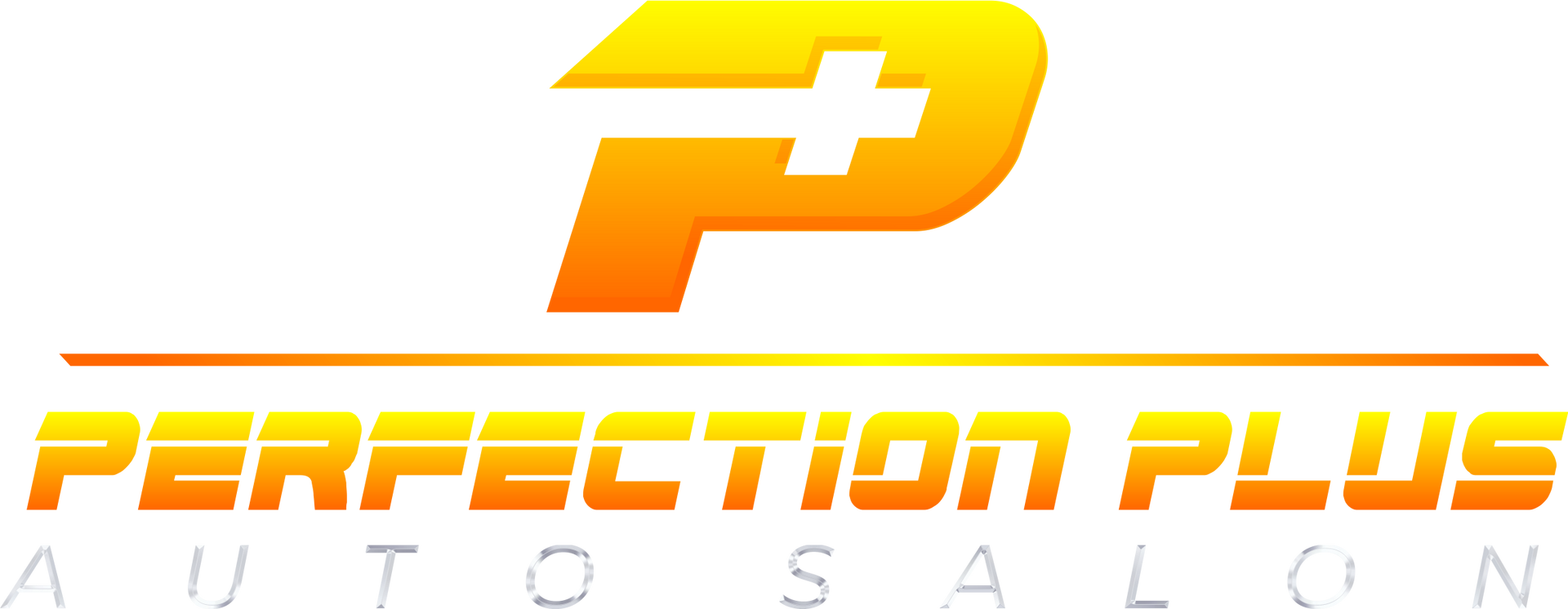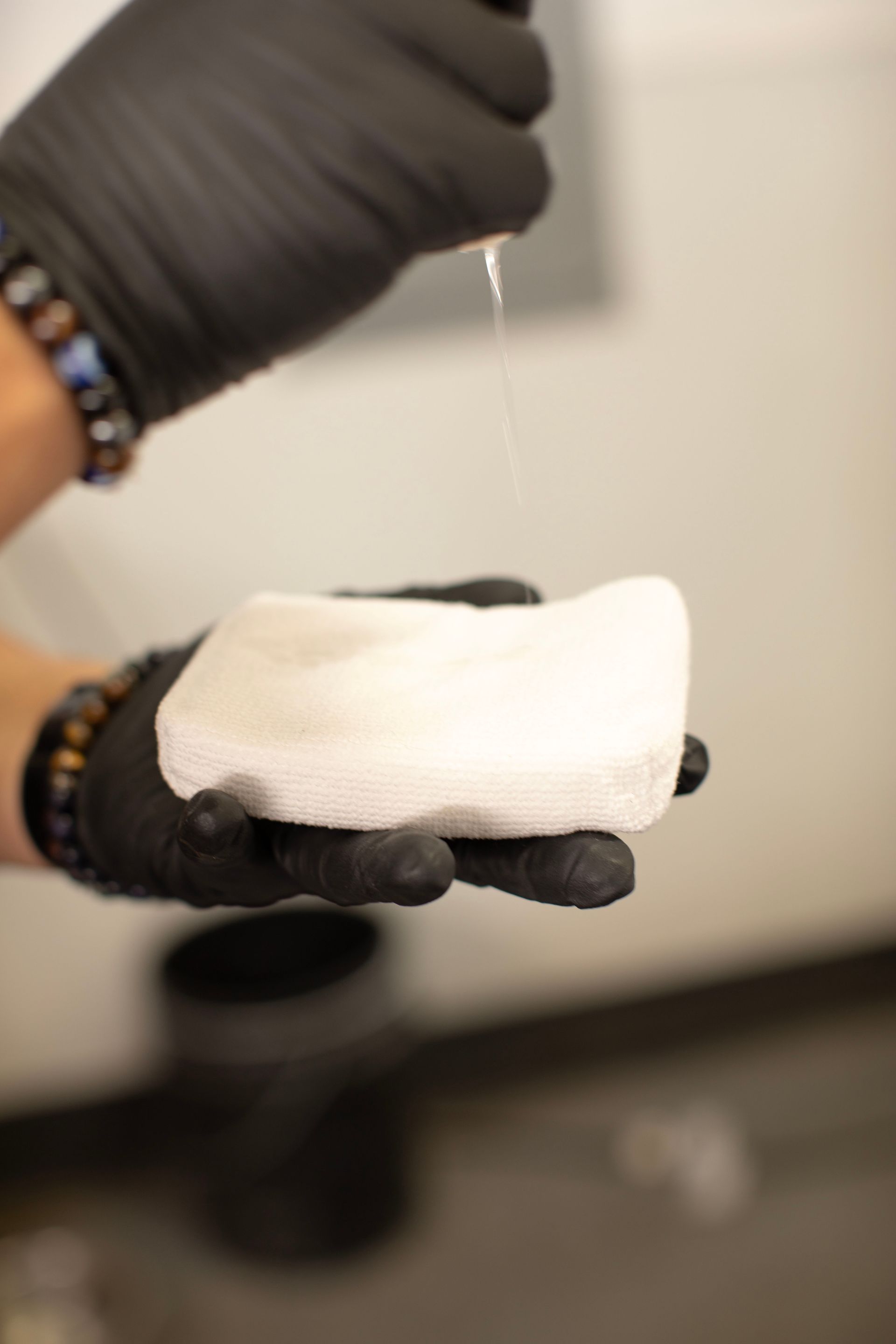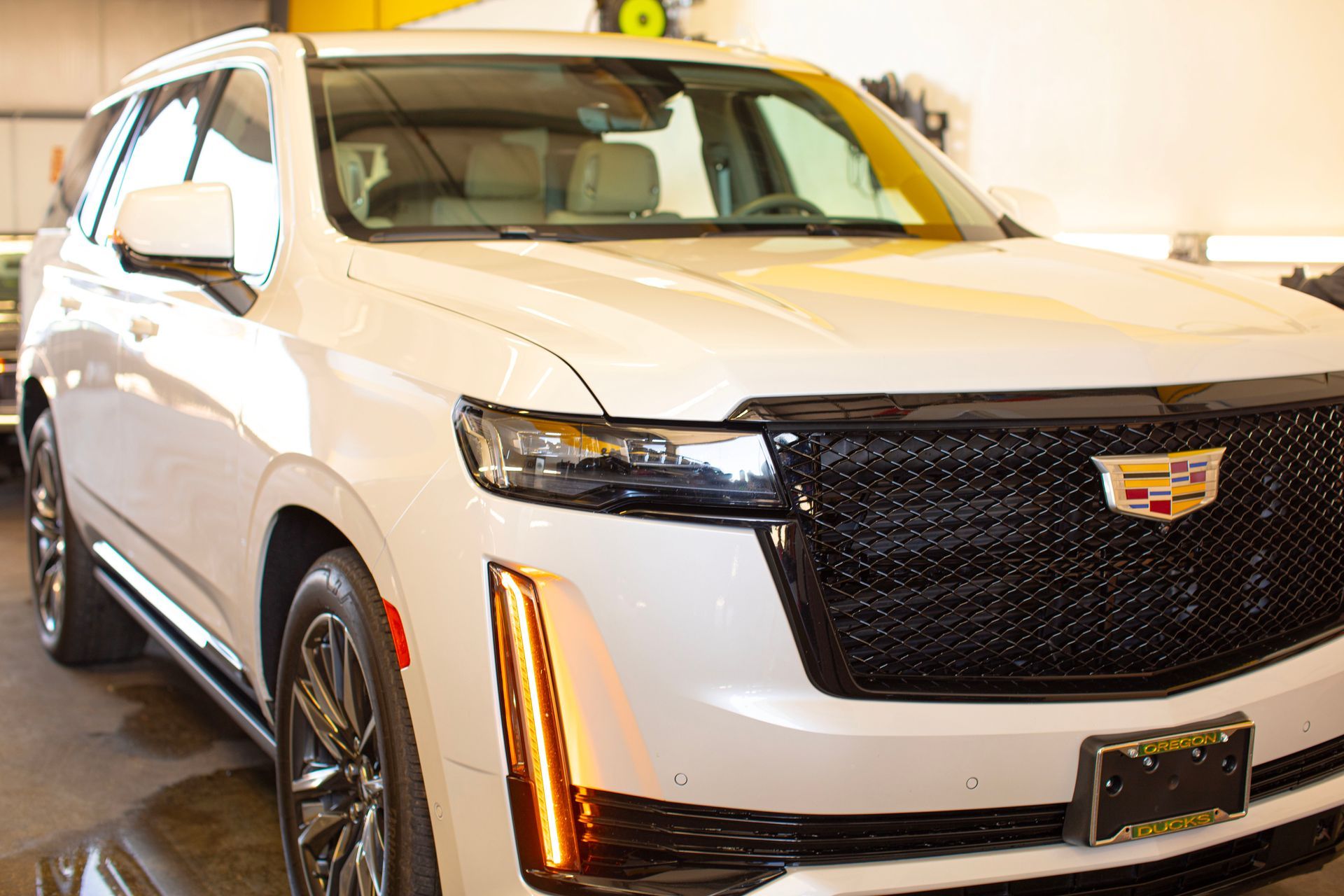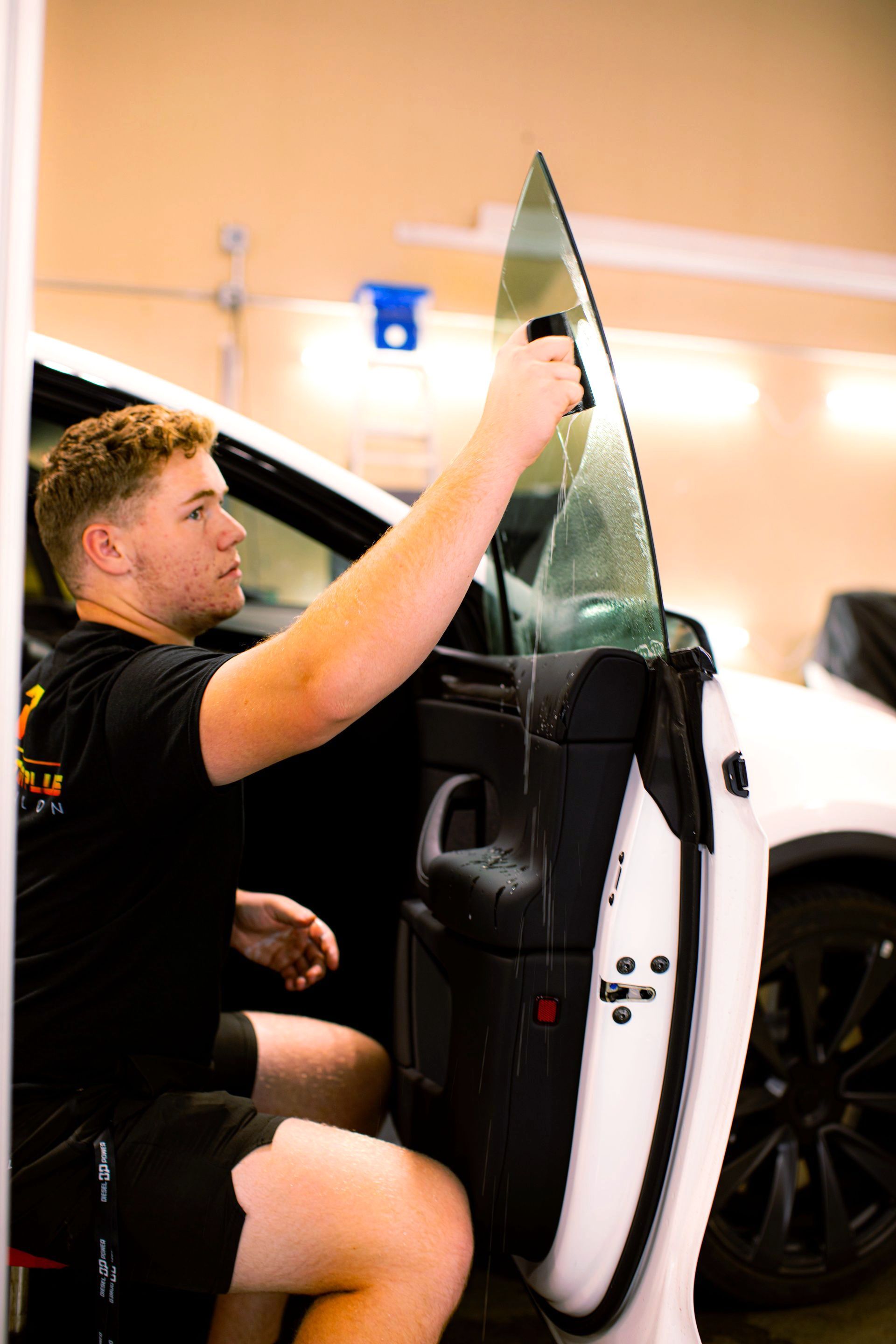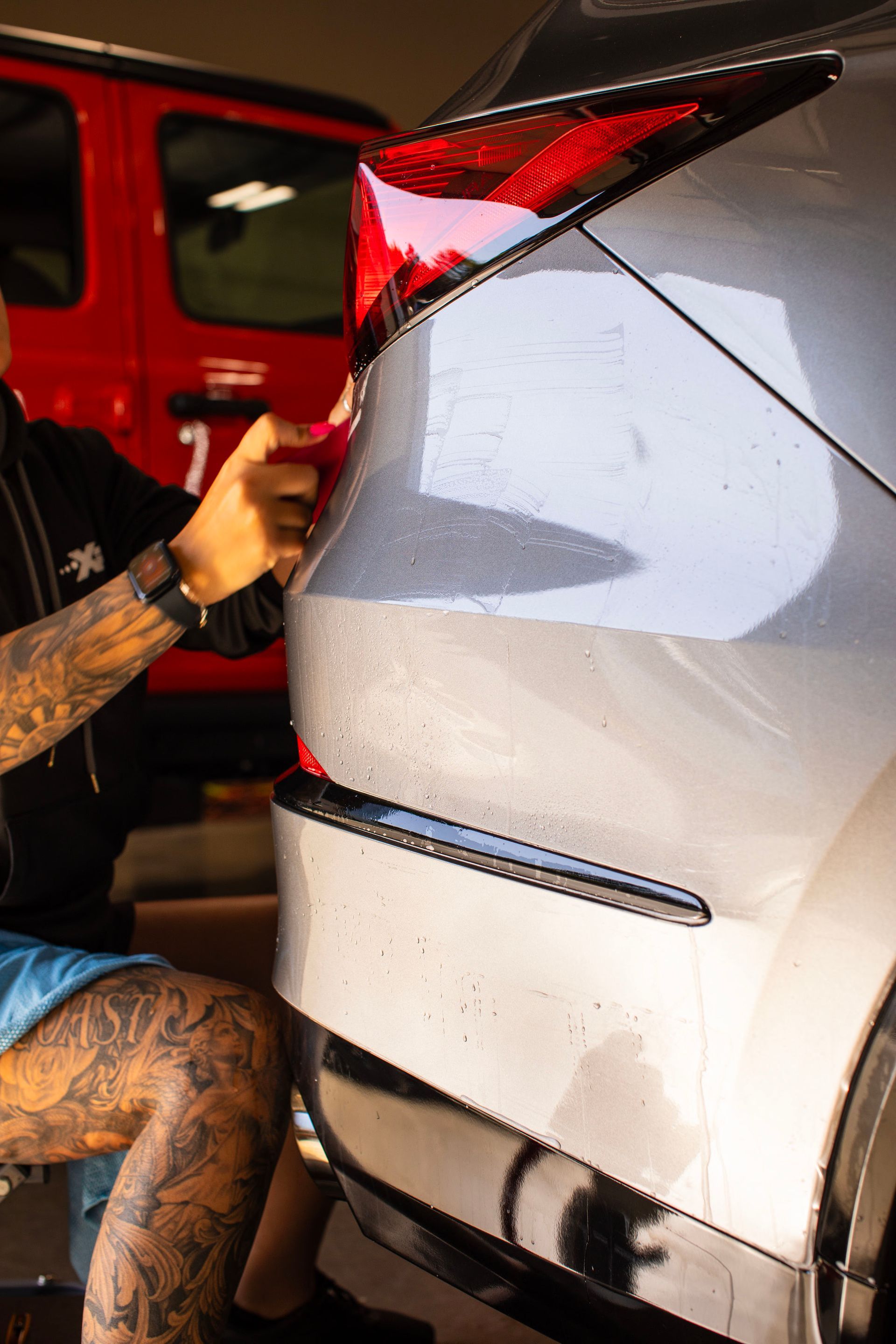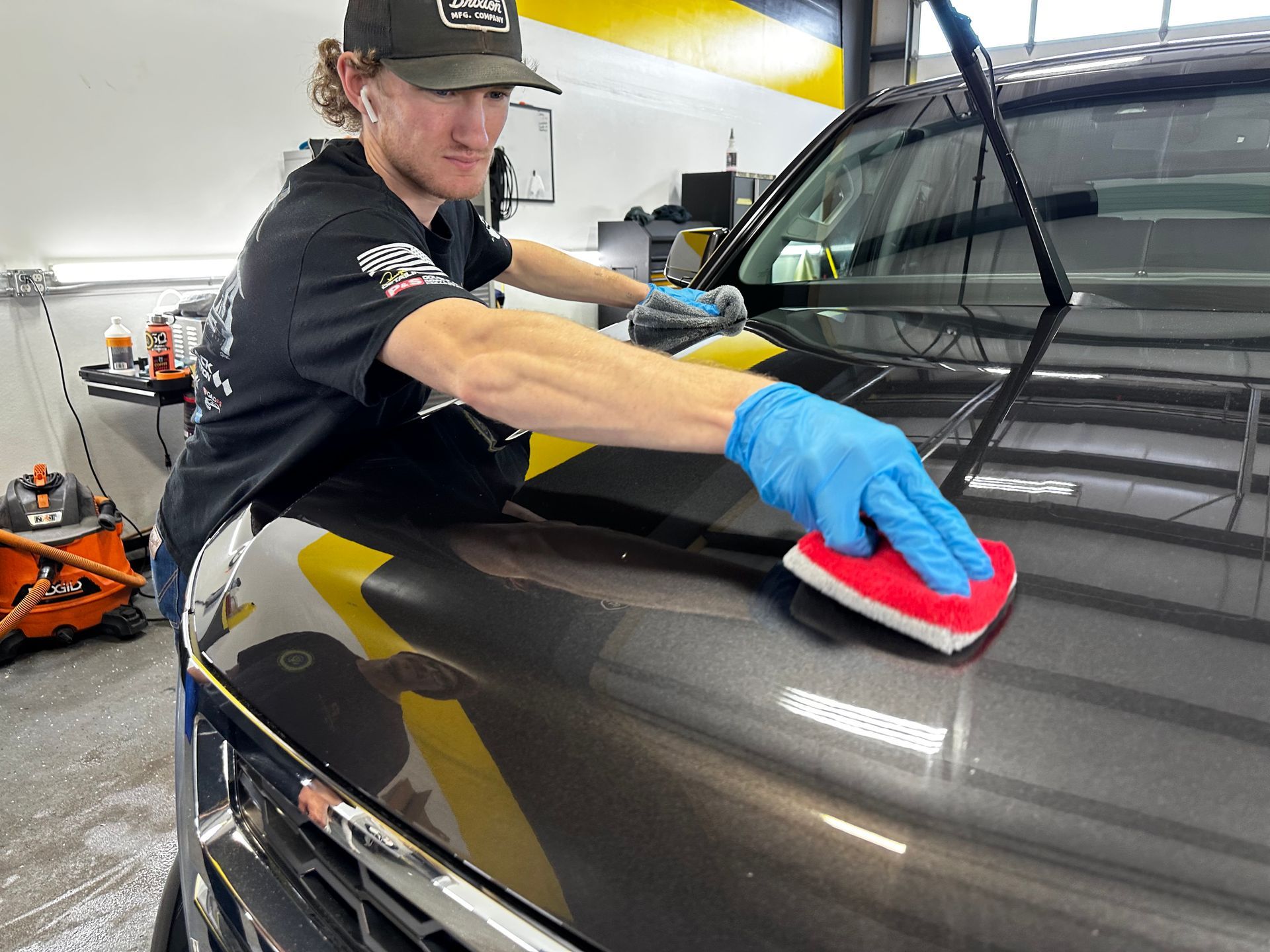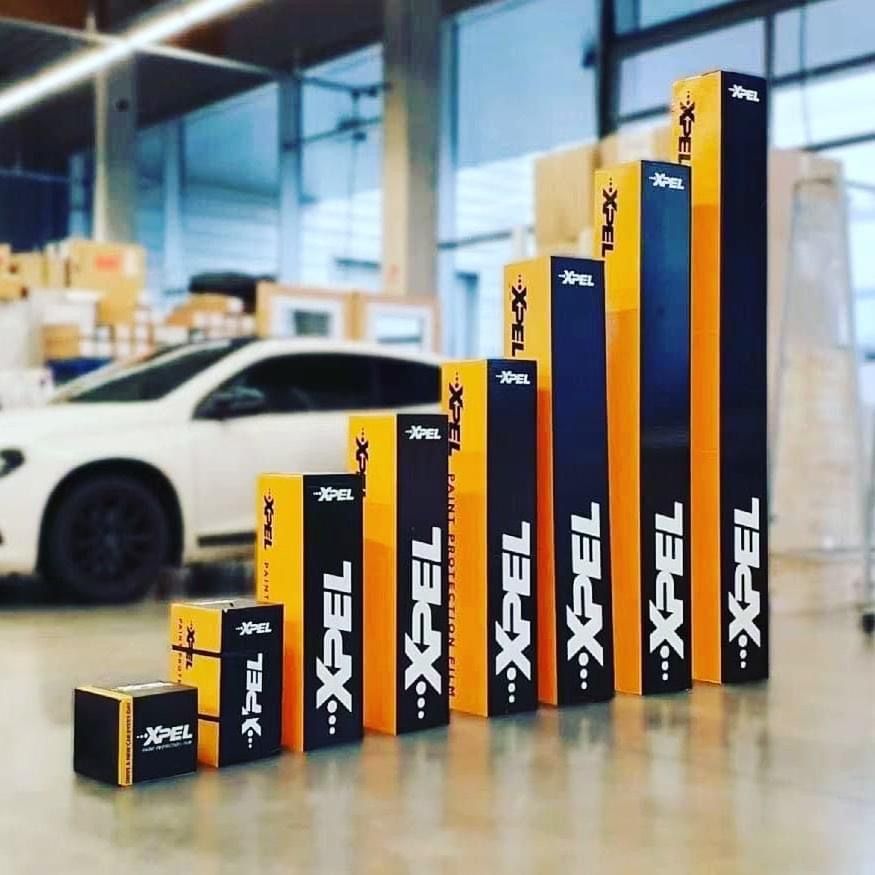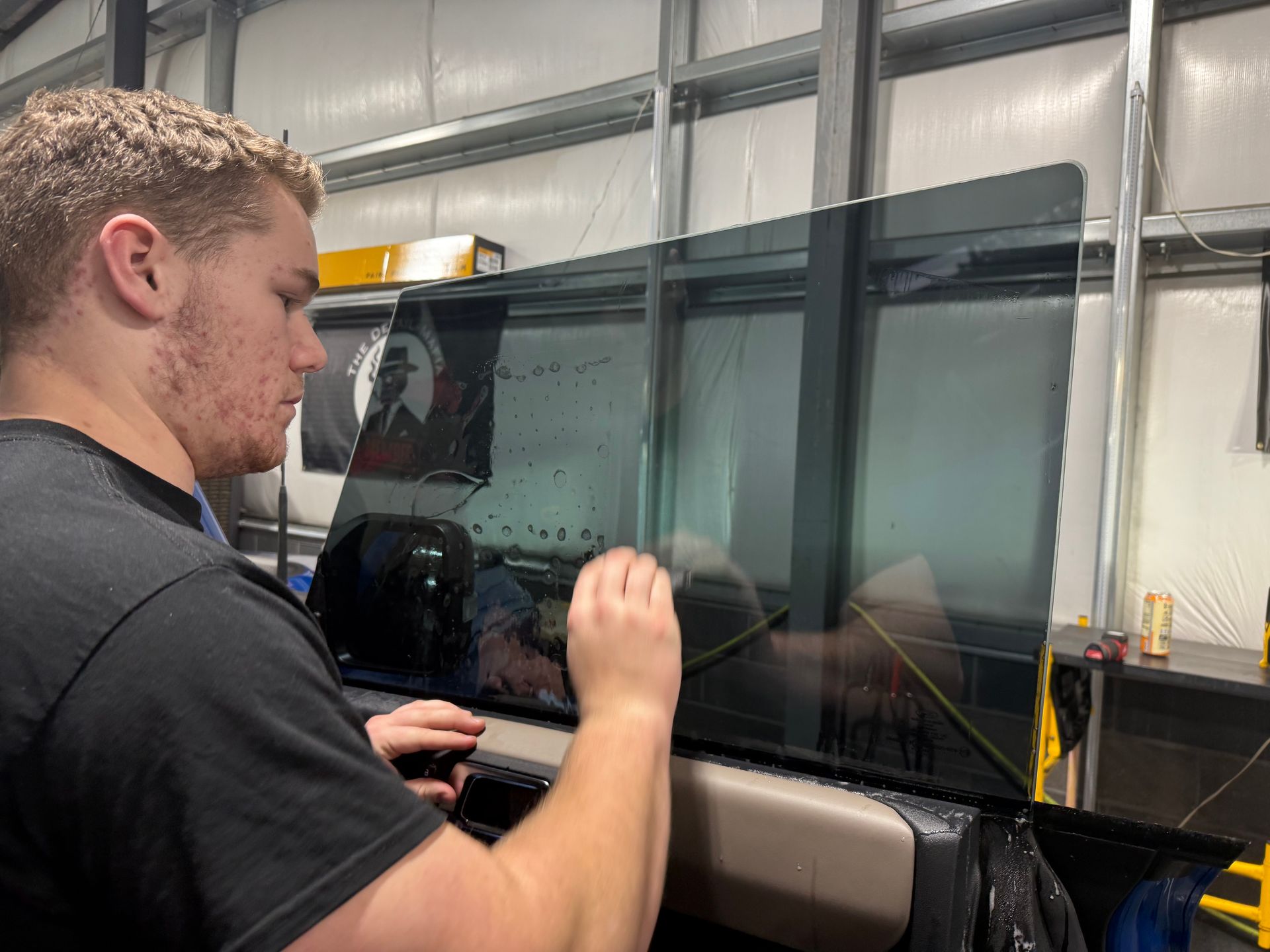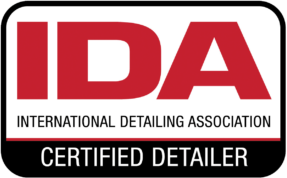Is Ceramic Coating Worth it for Your Car? Benefits and Protection Explained
GET A FREE ESTIMATEIf you take pride in your car's appearance and want it to look showroom-new for years, you've likely wondered about ceramic coating. This protective layer promises not only to keep your vehicle's paint shining but also to fend off harsh elements like UV rays and road salts. It sounds impressive, but is it truly worth the investment?
Yes, ceramic coating provides exceptional protection against environmental hazards, enhances the shine and gloss of the car's paint, extends the lifespan of the paint, and can potentially increase the vehicle's resale value. While it involves an upfront expense, these benefits may justify the cost for individuals looking to maintain their car's appearance and protect its exterior.
What is Ceramic Coating, and How Does It Work?
Ceramic coating is like a superhero shield for your car. It's essentially a liquid polymer (a type of plastic) that chemically bonds with the factory paint on your car's exterior. Once applied, this superhero shield creates a layer of protection between your car and the outside world. This protection works wonders against environmental contaminants like road salt, bird droppings, and tree sap. The silicon dioxide or titanium dioxide in the coating hardens after application, turning your car into a forcefield against these harmful elements.
How Does It Work?
When the ceramic coating is put on your car, it dries as hard as glass, providing an unbelievably slick and hydrophobic surface that repels water and dirt with ease. Imagine raindroplets magically dancing off your car instead of leaving water spots behind. That's the kind of sorcery ceramic coatings offer! They take the water beading effect to the next level by creating an ultra-hydrophobic effect—water just won't stick around, taking along dust and grime with it. This super slick layer is like having Teflon on your pan—it makes things glide right off without sticking. Unveiling the inner workings of ceramic coating illuminates how this modern marvel steps up to protect your cherished vehicle from the perils of the outside world.
The Benefits of Ceramic Coating for Your Car
You may be pondering, "Is ceramic coating truly worth it for my car?" Let's dissect this. One of the prime benefits of a ceramic coating is the enhanced protection it offers to your car's exterior. When your car faces the sun, its paint can degrade over time due to harmful UV rays, leading to oxidation and fading. However, with a ceramic coating, this risk is significantly reduced. The protective nature of the ceramic coating forms a shield against the sun's harsh rays, keeping your car looking newer for longer. This adds an extra layer of defense to maintain the integrity and shine of your car's paintwork, ultimately saving you money on potential repaints down the line.
Moreover, when it comes to longevity, ceramic coatings outshine traditional wax treatments. While ordinary wax may only last a few months before needing reapplication, ceramic coatings exhibit durability that far exceeds these standards. With proper care, they can safeguard your paintwork for 2-5 years—doubling or even tripling the lifespan of typical alternatives. Consider it an investment in your car’s future—a long-term solution rather than a temporary fix. Applying a ceramic coating ensures sustained preservation over an extended period without recurring maintenance. Another brilliant advantage of ceramic coating is its ease of cleaning. The hydrophobic properties of the coating make water bead off effortlessly, carrying dirt and grime away with it. This level of convenience in cleaning also extends to bird droppings, sap, or even water spots, which would otherwise require extensive scrubbing and detailing. By reducing the effort needed to keep your car looking sharp, ceramic coating ultimately saves you time and energy while consistently preserving its stunning appearance.
Don't underestimate the power of a glossy finish. Ceramic coatings offer a superior gloss, providing a deep, reflective shine that accentuates the visual appeal of your car. This means that even as time goes by and miles are added to your odometer, the lustrous finish will remain an eye-catching feature wherever you go. Imagine pulling into a parking lot or cruising down the highway—you'll be turning heads left and right with that enviable sheen that effortlessly sets your car apart from the rest. Whether you're parked under bright city lights or basking in natural sunlight, you can expect your car to radiate a magnetic allure that's hard to ignore.
By keeping your car's exterior in top-notch condition through the use of ceramic coating, you're simultaneously amplifying its market worth when the time comes for an upgrade or trade-in. Not only does this protect your initial investment by retaining its allure, but it also presents an opportunity for a significantly higher resale value should you decide to sell or trade in your vehicle. So there you have it—the benefits are quite clear! Enhanced protection from UV rays, simplified cleaning processes, an enduring glossy appearance, unmatched durability compared to wax treatments, and heightened resale value are just some of the compelling reasons why ceramic coating could be well worth considering for your car.
Common Drawbacks to Consider
As with any product or service, there are some drawbacks that come with the benefits of ceramic coating for your car. It's essential to weigh the pros and cons carefully to make an informed decision.
- Not Scratch-Proof: One common misconception about ceramic coating is that it makes your car's paint scratch-proof. While it does provide resistance to environmental contaminants, it's crucial to understand that it won't protect against larger impacts or scratches. So, if you're expecting complete protection against scratches and chips, ceramic coating may not fully meet those expectations.
- High Initial Cost: Another significant factor to consider is the initial cost of ceramic coating. Professional application can be quite expensive, ranging from a few hundred to several thousand dollars, depending on the size of the car and the quality of the coating. This upfront cost may deter some car owners from opting for ceramic coating.
- Maintenance Required: While ceramic coating offers superior protection, it is not maintenance-free. Regular washing and occasional top-ups of the coating are necessary to maintain its protective properties over time. This maintenance requirement means that car owners need to invest time in proper care to ensure that the ceramic coating continues to perform effectively.
Understanding these potential drawbacks is crucial when considering whether a ceramic coating is right for your car. By weighing these drawbacks against the benefits, you can make an informed decision that aligns with your specific needs and circumstances.
Costs Involved in Ceramic Coating
When it comes to ceramic coating, the investment varies widely based on several important factors. One such factor is whether you choose to go the do-it-yourself route or opt for professional application, each with its own set of costs. Let's take a closer look at the different cost elements involved.
If you decide to go down the DIY path, you can expect to spend between $50 and $150 for a basic kit. These kits generally include all the necessary materials and instructions for application. However, while the initial cost may be lower, it may not guarantee the same level of protection and longevity as a professionally applied coating. For those who prefer to enlist the services of a professional detailer, the cost can range from $500 to $2,500, with premium packages exceeding $3,000. The variation in price depends on factors such as the size and type of your vehicle, the condition of the paint, the quality and number of coating layers, as well as the experience and reputation of the detailer.
There are additional maintenance costs to consider when embarking on this journey. These costs encompass occasional reapplication of the coating and specialized car shampoos and detailing sprays required to maintain the coating's integrity and appearance over time. Choosing high-quality maintenance products is crucial to preserving the durability and effectiveness of the ceramic coating. It's important to place emphasis on securing reputable and experienced professionals who can ensure proper application and value for your investment. Expertise matters greatly in this aspect, as an inexperienced hand might mean subpar results or costly fixes down the line.
Understanding these variable costs puts into perspective the comprehensive financial commitment involved in ceramic coating. From DIY kits to professional applications and ongoing maintenance, each choice comes with its own set of trade-offs.
Comparing Ceramic Coating to Other Options
If you're considering a ceramic coating for your car, you might be wondering how it stacks up against other protective options. Let's take a closer look at waxing, sealants, and paint protection film and compare them to ceramic coating.
- Waxing: Waxing is a common choice for car owners looking to quickly add shine and some protection to their car's paint. It's more affordable than ceramic coating, typically costing between $20 and $100, but it comes with a trade-off. While waxing can provide a nice shine and protection, it only lasts for 1-3 months at best, requiring frequent reapplication.
- Sealants: Sealants offer longer-lasting protection compared to waxes. They typically last up to a year and provide better defense against environmental elements. Sealants can be a good middle ground between waxing and ceramic coating. They are more durable than wax but still fall short of the longevity and durability of ceramic coatings.
- Paint Protection Film: PPF provides superior protection against chips and scratches. It's a clear, thermoplastic urethane film applied to the paint of your car. However, this level of protection comes at a cost. A paint protection film can set you back anywhere from $1,500 to $5,000, depending on the size of your vehicle and the extent of coverage.
When examining these options, it becomes evident that each has its benefits and drawbacks. Waxing is affordable but requires frequent reapplication; sealants last longer but still don't measure up to ceramic coatings in terms of durability; and PPF offers top-notch protection but at a significant cost. If you live in an area with harsh weather conditions or if your vehicle is exposed to industrial pollutants regularly, choosing a lasting protection like ceramic coating might be worth the investment over waxing or sealants. By comparing these options side by side, you can make an informed decision about which protective solution aligns best with your specific needs and budget constraints.
Is Ceramic Coating Worth It for Your Car?
The decision to invest in ceramic coating depends on various factors and individual needs. Let's break it down.
If you're planning to keep your car for the long haul, a ceramic coating can make a real difference. The coating acts as a barrier against environmental hazards, making it easier to maintain that brand-new shine without needing frequent detailing. In the long run, this not only saves time and effort but also reduces the need for costly upkeep. If aesthetic appeal is of paramount importance to you, ceramic coating provides an enhanced gloss and depth of shine that can make your car stand out. Think of it as adding that extra bit of sparkle to your prized possession every single day. The ease of cleaning is also a notable factor, making those regular washes feel like less of a chore and maintaining that polished look effortlessly.
Imagine driving around in a car that always looks like it just rolled off the showroom floor - that's the kind of allure that a ceramic-coated exterior can add to your vehicle. Some might argue that the upfront cost of ceramic coating makes it less worthwhile. While this is a valid concern, it's important to consider the long-term benefits. If you plan on selling your car, having a ceramic-coated exterior could potentially attract higher offers and expedite the selling process. Consider it an investment that elevates your car's value beyond just aesthetics. Remember that individual needs vary, and what might be worth it for one person may not hold the same value for another.
When considering ceramic coating, don't forget to weigh the initial cost against anticipated long-term benefits. Whether it's reduced detailing needs or potential enhancements to resale value, conducting a thorough cost-benefit analysis tailored to your circumstances is crucial. The decision to ceramic coat your car depends on factors such as your long-term plans for the vehicle, how much importance you place on maintaining its showroom shine, and whether you're looking at potential returns when selling it in the future.
Trusted Ceramic Coating Services in Redmond, OR
Discover the
exceptional ceramic coating services at Perfection Plus Auto Salon in Redmond, OR! Our expert team is dedicated to providing your vehicle with unparalleled protection and a stunning finish. With our trusted techniques and top-quality products, we ensure your car remains in pristine condition, shielding it from environmental damage while enhancing its aesthetic appeal. Trust Perfection Plus Auto Salon to deliver results that exceed your expectations. Book your appointment today and experience the ultimate in automotive care! Call us at
(541) 598-6193 to get started today!
